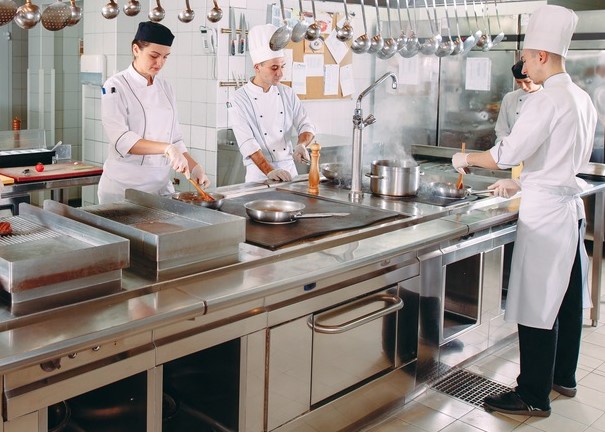Proper ventilation to commercial kitchens and food establishments, for the comfort, health, and safety of both staff and customers alike, is very important. The high temperature, fumes, and grease generated during cooking render kitchens uncomfortable, degrade air quality, and create huge health and safety risks unless properly treated. A proper ventilation system will go a long way in helping to reduce these issues, but it also enhances staff productivity and provides safeguards against the risk of fires within the establishment. The content of this article will dwell on why ventilation is very important, key components of a ventilation system, and tips for maintaining proper airflow.
The Importance of Adequate Ventilation
In a commercial setting, cooking generates high levels of heat, steam, grease, and smoke-all suspended in the air if there is no ventilation. Thus, it contributes to an unfavorable working environment. Such poor quality air may cause respiratory problems in kitchen workers, lower energy levels, and also invite fire hazards due to grease accumulation. Moreover, it makes dining unpleasant for the customers since the heat and odors from the kitchen seep into the dining area. A good ventilation system, therefore, does more than just controlling temperature; it plays a great role in ensuring that the workspace is safe, clean, and productive.
Installation of IMPs for Improved Temperature Control
The control of temperature is highly critical in commercial kitchens not only to provide comfort but also to maintain food safety. Insulated Metal Panels are among the great means to improve insulation in the kitchen area. Due to its high thermal resistance, panels minimize heat transfer between a kitchen and surroundings for maintaining indoor temperature settings. This makes them very valuable with ventilation systems, too, because IMP panels decrease the work an HVAC has to undertake, helping it maintain airflow efficiency by reducing costs. Besides, the IMPs are durable and easy to clean; therefore, they are suitable for food establishments. Mounting the IMPs on the kitchen walls will help the ventilation systems in being efficient, comfortable as well as managing the employees’ environment.
Meeting Regulatory Requirements
In most places, health and safety codes impose some requirements on ventilation that have to be observed in protection of the workers and customers. Commercial kitchens all too often are required to comply with minimum airflow rates and have specific regulations regarding types of ventilation systems. Compliance is crucial in light of the fact that noncompliance results in fines, extra inspections, or possibly complete shutdowns of the establishments. With a professional ventilation contractor hired to do the job, it can be designed and installed to observe the relevant legal and safety requirements, whereas routine inspections ensure it operates not only properly but also in compliance with regulations.
Energy Efficiency and Cost Savings
Besides health and safety benefits, a good ventilation system can make all the difference in energy efficiency and cost-cutting. Advanced ventilation systems have variable-speed fans that automatically adjust their power based on the demand in the kitchen, thus reducing energy consumption when it is not needed as much. Other ways of reducing energy consumption include recovering systems that trap the heat in the kitchen and then use it for other purposes. Although these may require a higher investment at first, it usually generates a lot of savings thereafter and hence enhances the sustainability of the business.
Cleaning for Proper Ventilation
After installing an efficient ventilation system in a commercial kitchen, one must still pursue simple, routine maintenance in order for the system to work effectively. Grease and particles will build up over time in hoods, ducts, and fans, eventually clogging the pathways and creating a fire hazard. Some very basic cleaning and replacing of filters could improve air quality and lessen risks. The lengthening of the service life and reduced mechanical breakdowns should also be considered advantages of a well-maintained ventilation system when lowering costly repairs are factored in.
Conclusion
Ventilation is one of the most paramount features of any commercial kitchen since health and safety are only guaranteed along with operational efficiency. A well-designed ventilation system serves to remove smoke, heat, and impurities, creating an atmosphere pleasant to be in for the staff and inviting to customers. With an excellent ventilation system and a scheduled maintenance plan, the owners prevent health hazards, the risk of fire, and one can manage to ensure that their restaurants will not face other regulations that might force their businesses to shut down. Indeed, good ventilation would later on promise a productive and safe kitchen, which is good for all employees and customers besides promising business prosperity.
Find a Home-Based Business to Start-Up >>> Hundreds of Business Listings.















































